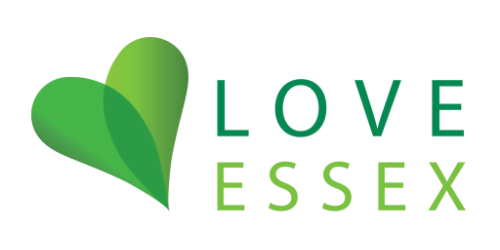Waste and recycling in Essex
Essex County Council is also responsible for managing the 21 recycling centres across the county.
Current performance
Each year around 650,000 tonnes of waste are thrown away by households in Essex, about a tonne for each household, with roughly 50% of waste recycled.
With around 1.5 million residents in Essex and the number of households in Essex set to increase in the next 20 years, the waste produced in Essex is also set to rise. Landfill, gate fee tax and other costs mean that throwing waste away is costing around £155 per tonne.
What happens to the waste and recycling collected at the kerbside or at recycling centres?
Watch this video for an overview of what happens to your waste:
Food waste
In Essex, food waste collected from your kerbside is taken to an anaerobic digestion facility. The food waste is broken down by micro-organisms to create biogas. This is a form of green energy that is used to generate electricity and heat.
The process also creates a fertiliser which can be used by farmers.
Watch this video to find out more:
Garden waste
Garden waste collected from your household and recycling centres is taken to an open windrow composting facility. The garden waste is shredded, mixed and laid out in long piles to decompose. The piles are turned regularly, as this encourages bacteria to grow. This produces heat and helps speed up the composting process.
After about 4 months, the process creates a healthy compost that can be used by farmers, growers and householders.
Watch this video to find out more:
General waste
General rubbish is currently taken to landfill where it eventually rots.
However, we are working towards our goal of zero waste to landfill by 2030. A key proposal in the new Waste Strategy for Essex is to use Energy from Waste (EfW) to deal with waste that can’t be recycled. EfW is the process of taking waste and turning it into energy and heat.
Once we have reused, repaired and recycled as much as we can, the next best option is to recover energy from what is left.
General recycling
Once collected, your recycling is sorted and cleaned so it can be turned into new products.
Glass
When glass bottles are jars are collected, they are separated from other waste. Non-glass items are removed by magnets and air suction. The glass is colour sorted by lasers, before being crushed into small pieces.
These small pieces of glass are melted alongside key ingredients in a furnace which is heated to over 1,500 degrees centigrade. Liquid glass is then divided into small portions which can be blown or pressed to make new bottles and jars.
Paper and card
Paper and card is collected, sorted and graded. It is taken to a paper mill where it is pulped and screened to remove items like paperclips and staples.
It is then cleaned, pumped and pressed. It is then rolled out on a paper machine and can be turned into newspaper, cardboard boxes, writing paper or toilet rolls!
Plastic
Plastic bottles, tubs and trays are separated from other recyclable materials by hand or machine. They are cleaned, sorted and arranged by colour - blue, natural, green and mixed.
They are then shredded, washed, melted and formed into pellets which can then be used to make new items including bottles, fleeces, furniture or children’s toys.
Tins and cans
Food tins and drinks cans are collected and sorted from other materials. Magnets are used to separate steel from aluminium. The cans are compacted together before being shredded into small pieces at an aluminium recycling plant.
The small pieces are added to a furnace which is heated to 750 degrees centigrade. The melted metal is poured out and cooled with water, which creates blocks. These blocks are rolled into very thin sheets at a rolling mill, where they are now ready to be made into more cans!
